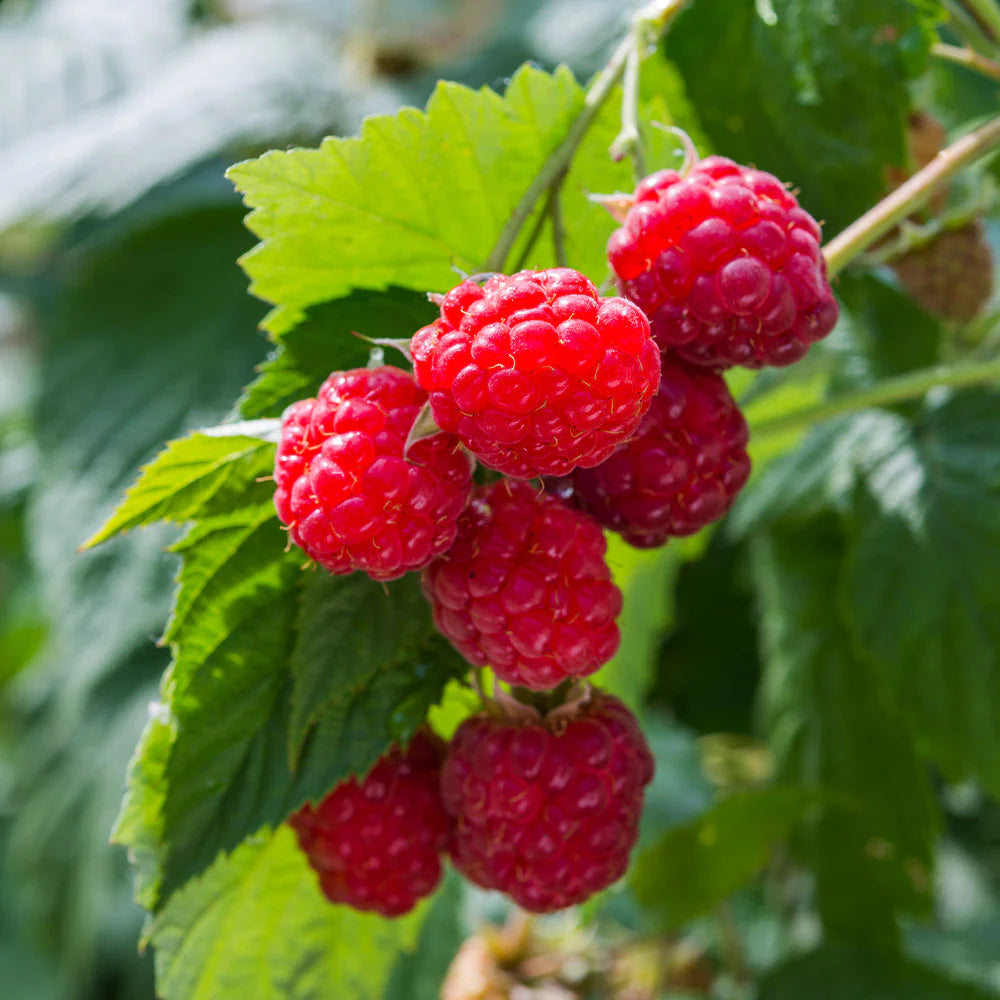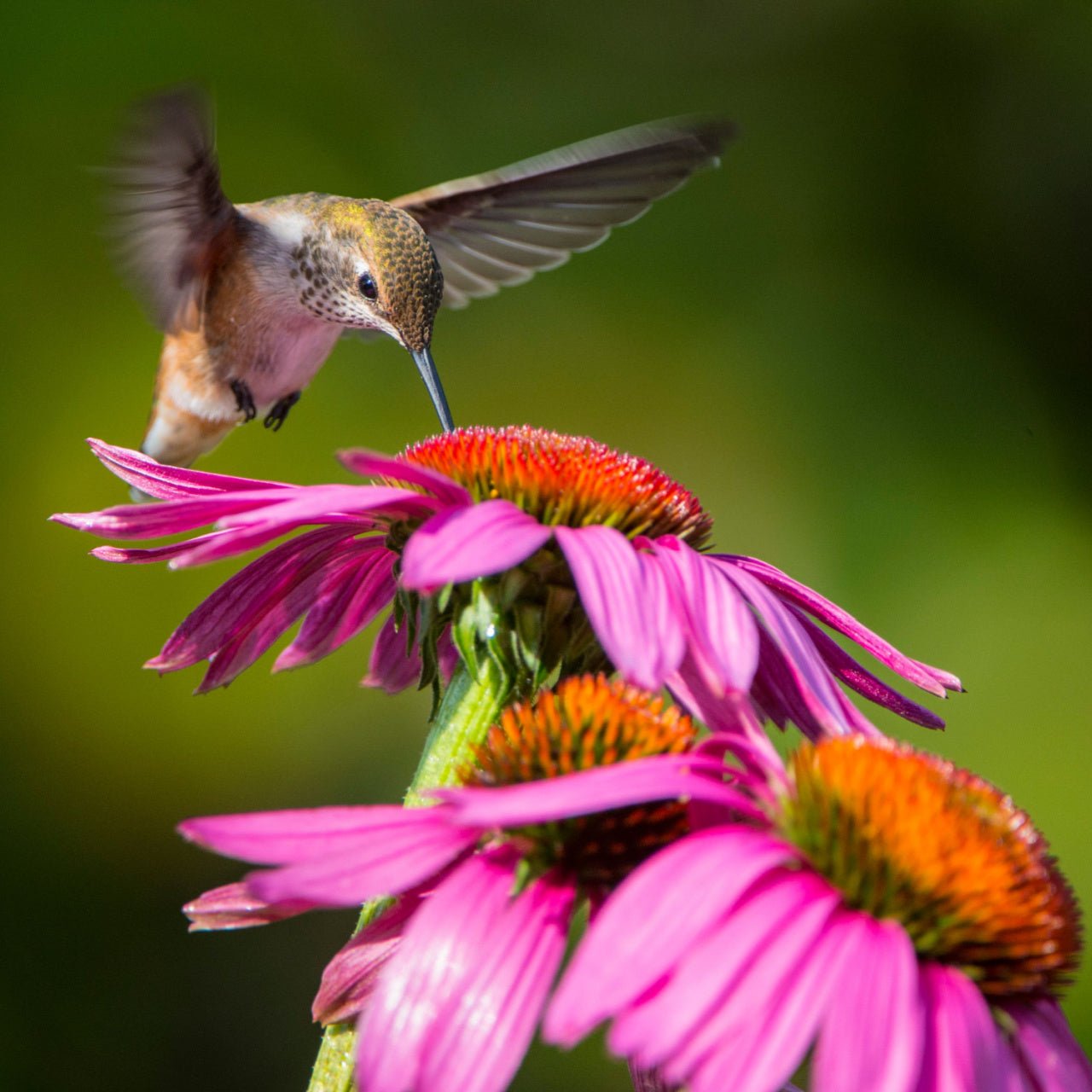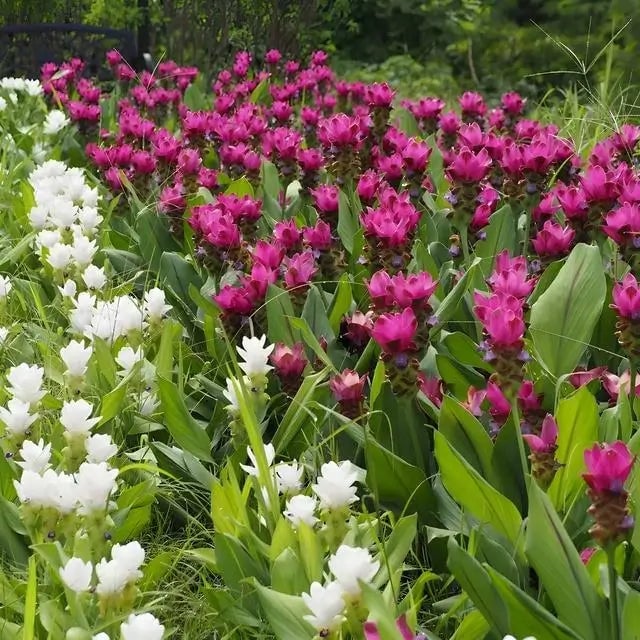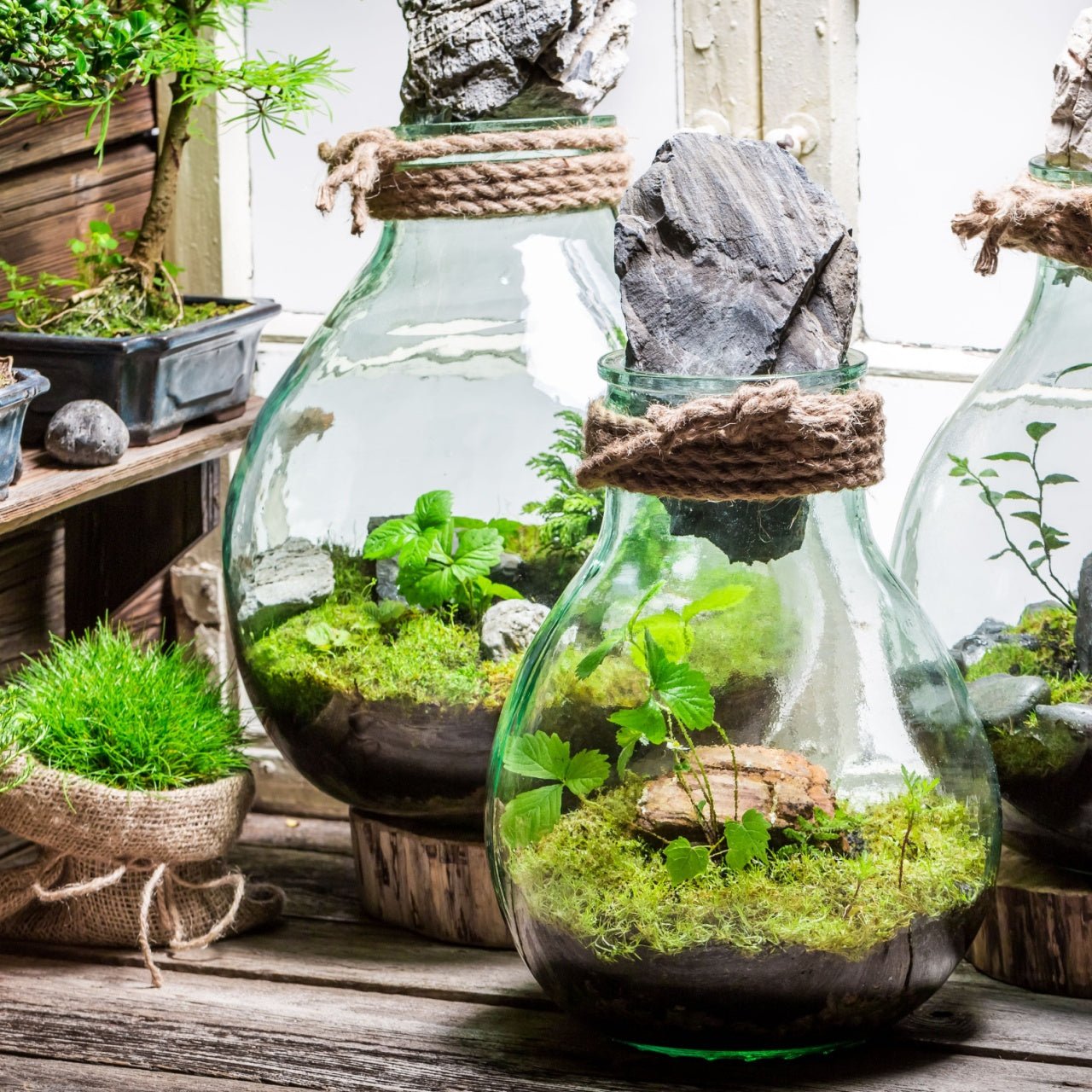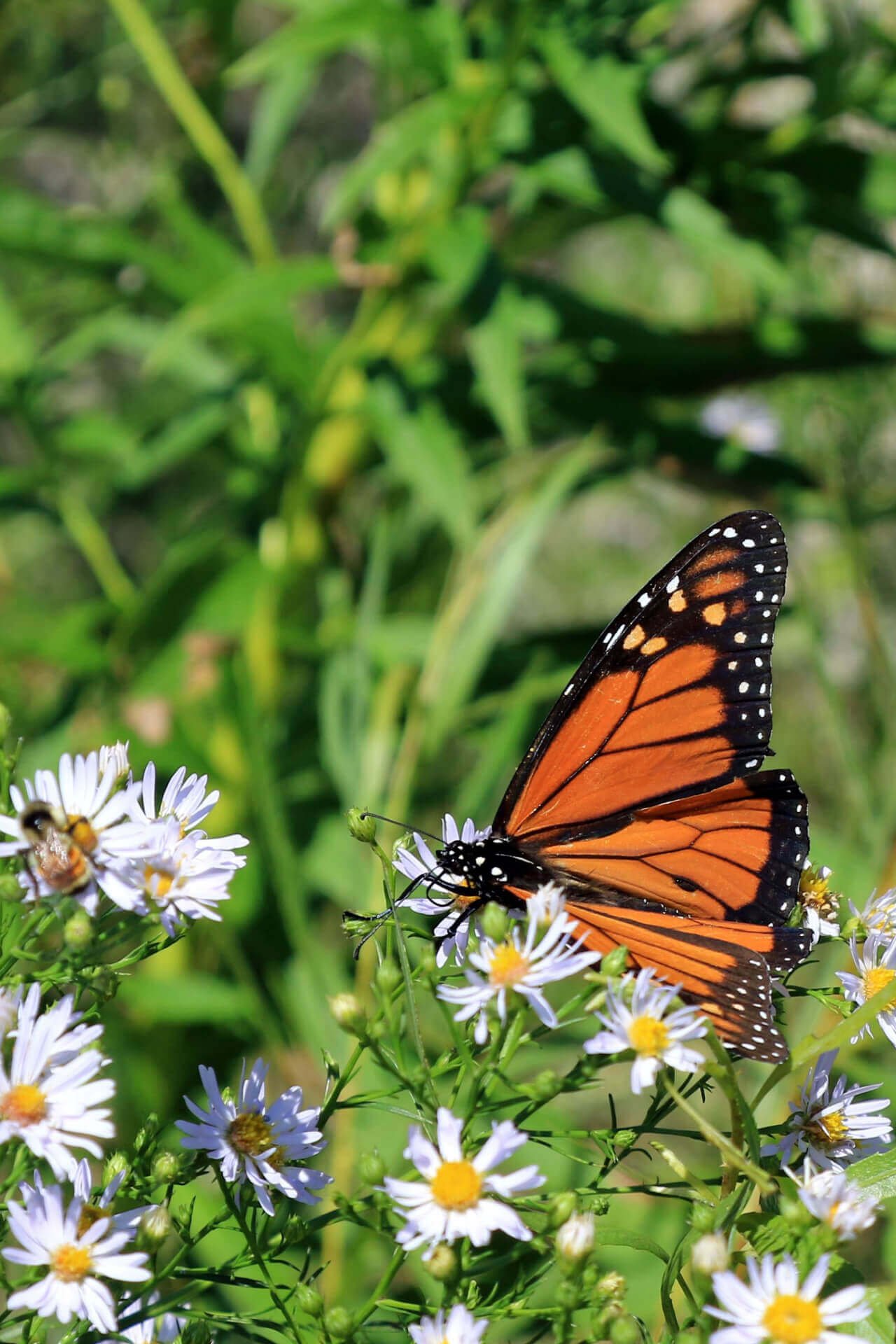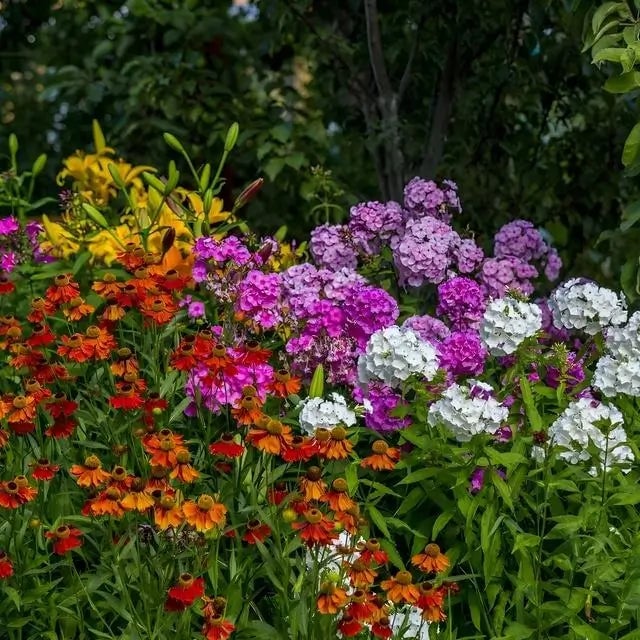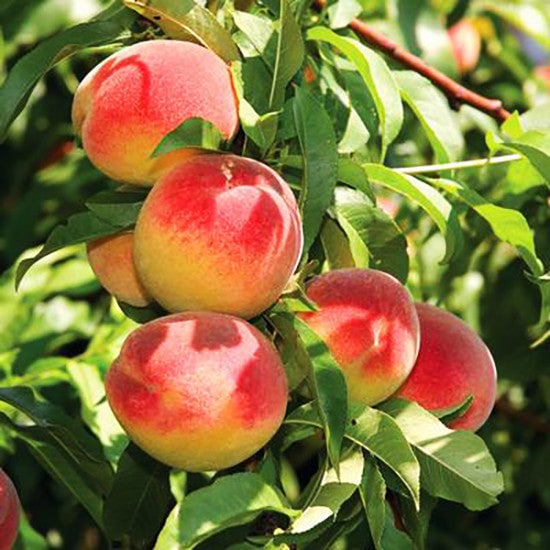


Peach Fruit Tree
Thrives in Zones 4 - 8
Enhances garden beauty with blossoms
Adds value to your property’s landscape
Boosts local biodiversity and wildlife
Ships in
Spring 2026Peach Fruit Tree For Sale
The Peach Fruit Tree 3-4' (Prunus persica) will make a great addition to your landscape or orchard. Enjoy fresh peaches right off the tree, warm and sweetened by sunshine.
Plant Details - Peach Fruit Tree
Family: Rosaceae
Light Requirement: Full Sun
Water Needs: Moist
Height: 12 – 20 ft.
Spread: 15 – 20 ft.
Growth Rate: Slow
Bloom Time: Spring
Flower Color: Pink
Wildlife Value: Attracts bees
Landscape Uses and Maintenance – Peach Fruit Tree 3-4'
Peachy keen? The Peach Fruit Trees 3-4' will make peaches your new favorite fruit, if it isn’t already!
These trees are high maintenance and need substantial care, so be ready to commit and give this tree TLC through the seasons. They have light pink to white flowers that bloom in spring.
Give this tree a location that has full sun.
Plant in a well draining area in sandy to loamy soil. Avoid planting them in heavy clay or compacted soil.
Thin out trees in very late winter or very early spring to decrease overall fruit count and have better fruit size. It is better to harvest less fruits that are high quality, than to have many low quality fruits and be disappointed by the flavor or size.
Give your trees a balanced fertilizer in spring to ensure optimal health.
Water regularly and very thoroughly when you first bring this tree home until well established and then let Mother Nature do her job. This tree will need plenty of consistent watering especially during drought. Remember, the insides of your juicy peaches are made up of mostly water.
This tree is not disease or pest resistant, so watch for signs of fungal or pest presence and treat accordingly. Watch closely for signs of peach tree borer including frass and breaks in the bark.
Deer resistant.
Noteworthy Characteristics
Should I get one or two? The Peach Fruit Tree 3-4' is self pollinating, so you can plant one tree and still have fruit to harvest. Plant one tree of each of your favorite varieties to grow your own orchard and enjoy fresh fruit, without the worry about the last time pesticides were used before harvest.
This Is How Your Plants Will Look upon Delivery

Bloom Season
Spring
Bloom/Foliage Color
White
Height at Maturity
Under 25 Feet
Care
Peach fruit trees need well-drained soil and regular watering. They should be pruned annually to remove dead or crowded branches and shape the tree. In early spring, they should be fertilized with a balanced fertilizer and protected from pests with organic sprays as needed.
Plant Reproduction
Peach Fruit Tree spreads through seeds, root sprouts, or grafting.
How to Grow and Care for Fruit Trees
Fruit trees are a rewarding addition to any landscape, offering fragrant blossoms in spring and fresh, homegrown harvests in summer or fall. Popular varieties like apple, peach, pear, and plum thrive in full sun and well-drained, nutrient-rich soil. Choose trees suited to your USDA zone, and plant in early spring or fall for the best root development.
Dig a hole twice as wide as the root ball and deep enough so the root flare sits just above the soil line. Backfill with native soil, water deeply, and apply mulch around the base—keeping it a few inches from the trunk—to retain moisture and suppress weeds. Water regularly during the first growing season, especially during dry spells.
Prune annually to shape the tree, improve air circulation, and boost fruit production. Fertilize in early spring with a balanced or fruit-specific fertilizer. With proper planting, seasonal care, and a little patience, fruit trees will reward you with beauty, shade, and bountiful harvests year after year.
Shipping date depends on the date displayed and chosen when you order from the product's page.
We do not accept returned plants. If you purchased an extended warranty we do accept claims, please navigate to the warranty page for instructions HERE




.png?v=1722283035708&em-origin=cdn.accentuate.io&em-format=auto)
Delicious Fresh Peaches:
Enjoy the taste of homegrown, juicy peaches right from your garden, perfect for snacking, baking, and cooking.
Healthy Harvest:
Peaches are rich in vitamins and antioxidants, making them a nutritious addition to your diet straight from your backyard.
Beautiful Blossoms:
The Peach Tree produces stunning pink or white flowers in spring, adding a vibrant splash of color to your landscape.
Attracts Pollinators:
The fragrant blooms of the Peach Tree attract bees and butterflies, supporting a healthy garden ecosystem.
Header
Use this content to share information about your store and products.
Frequently asked questions
Still have a question? Contact us here.
Yes, we ship all over the world. Shipping costs will apply, and will be added at checkout. We run discounts and promotions all year, so stay tuned for exclusive deals.
It depends on where you are. Orders processed here will take 5-7 business days to arrive. Overseas deliveries can take anywhere from 7-16 days. Delivery details will be provided in your confirmation email.
You can contact us through our contact page! We will be happy to assist you.








